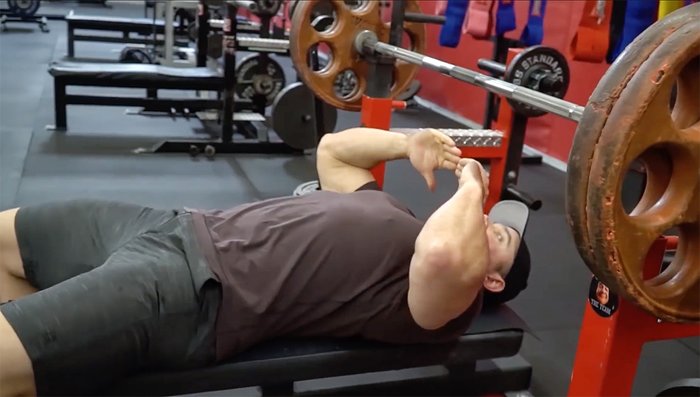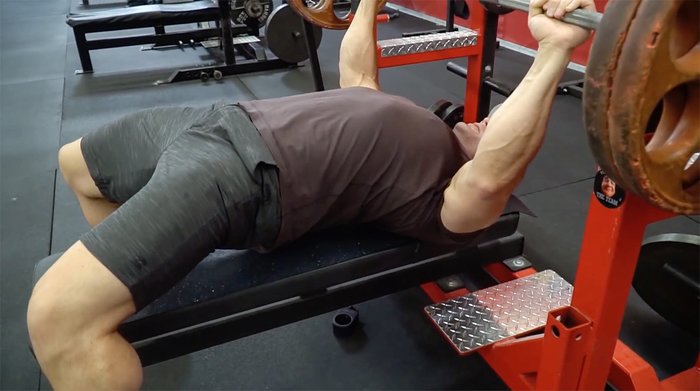Your workout partner ditched you again on heavy bench day. Now, you are not only missing your number-one hype man, but you don't have a spotter. You also don't feel like reluctantly trusting a gym rando to hand you a heavy barbell. But not benching isn't an option—it's your poverty lift of the big three.
This is why it's important for any lifter to learn how to properly set themselves up for a solid bench press. If you train at home, or at an hour where spotters are a luxury you don't have in the gym, it's doubly necessary (although, to be clear, having pins or safeties is still a good idea). Heck, even if you compete in powerlifting, it's invaluable in case you were to ever get a bad hand-off at a meet.
Whether you're aiming to bench 300 or whatever feels heavy to you, your unrack routine should be consistent and safe, resulting in the most effective reps possible. And Mark Bell, the owner of SuperTraining gym, creator of the Sling Shot, and a man with an 800-pound bench to his name, is the perfect coach to break down the art of the self unrack so you can avoid a breakdown in your bench press.
Don't be that guy who got a million views on YouTube for a gnarly gym fail. Let Mark show you the way to a stronger bench, and a stronger life overall.
1. Make sure the barbell is even with your eyes
Before you ever put your hands on the bar, set up closer to the rack than you might expect, to shorten your unrack distance. Mark says he likes to let his head hang off the end of the bench as an indicator of proper positioning. The farther you have to move the barbell, the more energy you're expending to get the barbell out of the rack. As an added benefit, you also won't be bringing the bar out in an unstable position.

2. Use the barbell to help get your body into the proper pressing position
Grab the bar where you normally would—be it close, shoulder width, or out wide. Your feet should not move once they are set where you want them. With your grip settled, lock your shoulders into place by raising your upper body, taking your shoulders and "sticking them in your back pocket" as Mark describes, or pulling them back and down.
Once they're tight, drive them underneath you into the bench pad while simultaneously pushing with your legs, as if you're trying to slide your body toward the top of the bench.
3. Set your hips and elbows
Push your hips up off the bench and onto your toes. Then, turn your elbows out and under the bar for a stronger unrack position. This will put your upper body in a slight decline position. This allows for you to set your hips where you want them as you bring the weight out and not have to do more adjusting after you bring the weight out.

When the weights get heavy, you don't want to have to fidget underneath it. You need to be locked down tight before the rep starts!
4. Push the bar off the uprights
From the slight decline position, raise the bar off the uprights. If you've followed the other steps up to this point, you'll only have to do a slight push to get the bar up over the hooks. Then, lower your hips back down to the bench and use your lats to "pull" the bar out from the rack, so that your shoulders stay in place.
Once the bar aligns over your chest, turn your elbows back in before starting the movement. Once the weight is set over your body and your butt is down, you're ready to go. Now, press!
